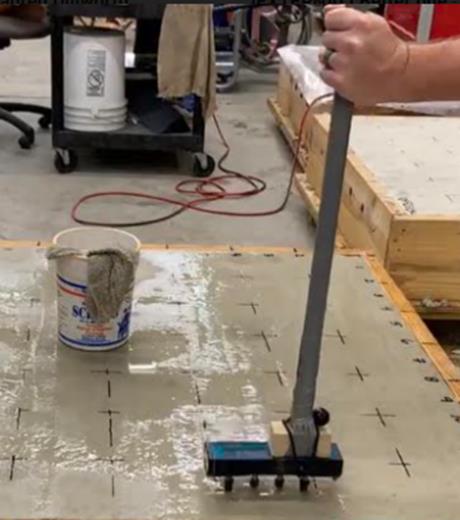Extensive research in recent decades has led to new understanding of concrete deterioration mechanisms, advancements in concrete mixture design, and development of better field and laboratory tests for QA and QC. With this new knowledge, an FHWA initiative is underway to improve the performance of concrete infrastructure through performance engineered concrete mixtures (PEM).
Work included in this project leveraged progress from the initial efforts of NCDOT to move towards a specification for PEM initiated as part of NCDOT RP 2018-14 and RP 2019-41, along with the extension of findings from other ongoing related research on concrete materials to support specifications for and use of more durable and sustainable concrete mixtures in North Carolina highway infrastructure.
This project included laboratory evaluation to expand the catalog of data available to refine specifications and targets for several PEM tests, including surface resistivity, shrinkage, Super Air Meter (SAM), and strength. Emphasis was placed on evaluating the potential benefits that could be achieved through use of optimized aggregate gradation mixtures and lower paste contents.


Typical
surface moisture condition Schematic showing the three different orientations
after wetting/preparation and used when measuring surface resistivity
attachment to allow
surface resistivity at the 169 measurement points
measurements to be taken rapidly
while standing
Resources and tools to support quality assurance (QA) and quality control (QC) of structural and pavement concrete were developed, and the surface resistivity meter was also evaluated for use in evaluating the quality of overlay concrete. PEM tests were also used in the field as part of a second pilot project, which included construction of structures along an interstate widening project south of Charlotte, NC.
The test results were analyzed, and recommendations regarding targets and PEM specification approaches were provided. Overall, this work should support 1) cost savings associated with longer service life and reduced maintenance costs for concrete pavements, bridges, and other infrastructure 2) an enhanced focus on quality during construction, driven by performance-based requirements, 3) guidance on interpretation of laboratory testing results and the impact on performance, 4) improved QA and QC testing particularly the use of new and emerging PEM tests from AASHTO PP 84 (now R 101), and 5) further implementation of PEM tests and specifications by NCDOT.
